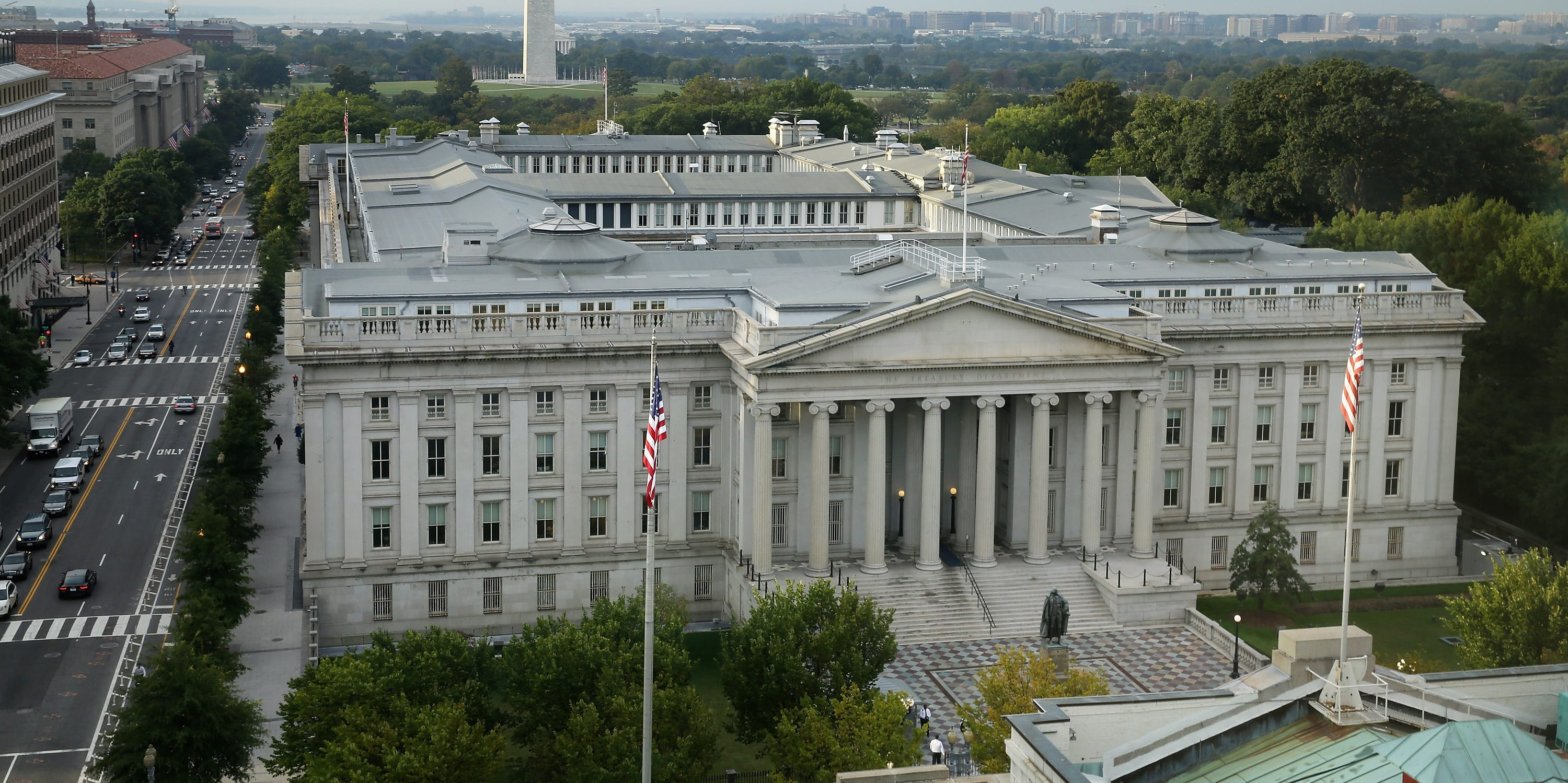The Treasury market is starting to price in the possibility of a US debt default later this summer.The difference in yields between US Treasury bills maturing in May and July hit a record 1.49%.”Investors are likely demanding more to hold those securities at risk of delayed payment,” LPL Research said. Loading Something is loading.
Thanks for signing up!
Access your favorite topics in a personalized feed while you’re on the go.
The US Treasury market is starting to price in the possibility of a US debt default amid a showdown in Congress, according to a Wednesday note from LPL Research.
The alarm bells in the Treasury market are being heard in short-term Treasury bills and their current yields, with investors seeking a higher rate of return for the risk they’re taking on by buying Treasury securities that are scheduled to mature during the summer months that a debt default could happen.
“Treasury bills that mature in May are yielding about 1.2% less than t-bills that mature one month later (around June) and a record 1.49% less than t-bills that mature in July,” LPL’s chief fixed income strategist Lawrence Gillum said.
The one-month Treasury bill currently yields about 3.71%, compared to 5.14% for a 3-month Treasury bill.
Most estimates suggest that the Treasury will have enough cash on hand to pay its May obligations, but that outlook gets more precarious into June, July, and especially August unless Congress quickly acts to raise the debt ceiling limit.
“Investors have bid up the price of these securities seemingly at the expense of debt that matures around the expected x-date(s)… investors are likely demanding more to hold those securities at risk of delayed payment,” Gillum explained.
The difference in yields between T-bills that mature in May and July is at levels that dwarf what was seen during the last serious debt showdown in 2011, when the S&P downgraded the country’s debt rating to AA+ from AAA.
A similar scenario could play out this time as Republicans show no signs of working with Democrats to pass a debt limit increase, despite continued remarks from both sides of the aisle that a US debt default “is not an option.”
“Another rating agency, Fitch, has threatened to do something similar [to S&P in 2011] if Congress fails to act soon. Another debt downgrade would likely be disruptive to financial markets. While we think Congress wil act in time and get a deal done, these games of political chicken can introduce volatility to markets,” Gillum said.
LPL Research
